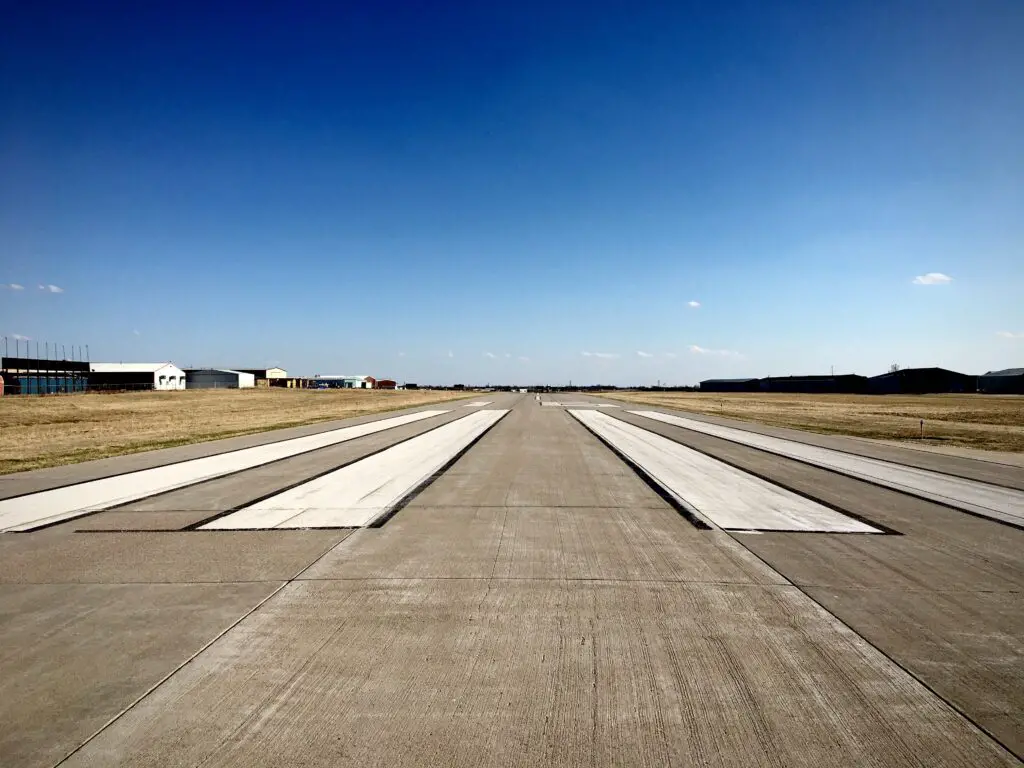Airport runways can be a significant part of the overall design of an airport. They need to be large enough to handle the largest commercial aircraft, while also being able to accommodate emerging technologies and future growth. In this blog post, we’ll explore the runway design process, and discuss some of the key considerations that must be taken into account.
Airport runways are typically designed with two main goals in mind: safety and efficiency. Airports need runways that can accommodate the largest commercial aircraft in order to meet safety standards, but they also need runways that can handle high traffic volumes without causing delays or overcrowding. Runway design is a complex process that takes into account a variety of factors, including weather conditions, airport layout, aircraft requirements, and runway surface type.
In this blog post, we’ll focus on runway design considerations for airports that serve commercial passenger flights. We’ll discuss some of the key factors that must be considered when designing a runway and provide examples of how these factors have been implemented at various airports around the world. We’ll also highlight some of the latest advances in runway technology, and discuss how these developments may impact future runway design decisions.
Types of Airport Runways
There are a few different types of runways at airports. They can be classified according to their intended use:
- Conventional Runway: This runway is designed for normal aircraft operations. It is the most common type of runway and typically has a width of 3600 feet or 1030 meters.
- Approach Runway: This runway is used for landing and takeoff and is narrower than a conventional runway. It is typically 900-foot wide or 2750-meter wide.
- Departure Runway: This runway is used for departure and landing and is wider than an approach runway. It is typically 4000 feet wide or 1270 meters wide.
Some airports have multiple runways that can be used for different purposes, such as an approach and departure runway, or conventional and shorter runways for smaller planes.
The Design of Airport Runways
Runway design has come a long way since the early days of aviation. The earliest airports were designed with the intention of allowing planes to take off and land using as little distance as possible between them.
As planes became faster and more efficient, it became necessary to create larger runways in order to accommodate them. Today, runway design is a complex and highly specialized field that requires the input of many different experts in order to ensure safe and efficient operations.
There are a number of different factors that must be taken into account when designing a runway, including the size and shape of the airport, the type of aircraft that will be using it, and the weather conditions. Each airport is unique, and there is no one perfect approach to runway design. The goal is always to provide the best possible service for passengers and aircraft alike.
One of the most important factors to consider is the type of aircraft that will use the runway. There are three main types of aircraft: jets, turboprops, and helicopters. Jetties or extended runways are typically designed for jets, while shorter runways are designed for turboprops and helicopters.
The weather conditions expected at the time of use also play a major role in runway design. For example, if it is expected that there will be strong winds during a landing or takeoff, a shorter runway may be better suited than a longer runway. Conversely, if it is expected that there will be little wind activity, a longer runway may be better suited.
Finally, the terrain around an airport can also affect runway design. For example, if an airport is located near a mountainside, it may be necessary to design a longer runway to avoid any potential obstacles.
Some of the most common runway designs include parallel runways, crosswind runways, and reclaimed land runways. Parallel runways are ideal for airports with heavy traffic congestion or windy conditions. Crosswind runways are designed to handle strong gusts of wind from either direction. Reclaimed land runways are typically used at airports that are close to bodies of water or populated areas.
Airport Runway Design Code
Airport runway design codes vary by airport and country, but they all have certain requirements that must be followed. The most important thing to remember when designing a runway is that it needs to be long enough to accommodate the largest aircraft that will be using it.
Additionally, the width of the runway needs to be large enough for emergency vehicles to pass through easily. Finally, the runway should have a gentle slope so that planes can quickly reach their destinations.
Airport Runway Marking
Designing airport runways can be a challenging task, as the markings need to be legible from a long distance while minimizing interference with other aircraft. There are a number of different marking systems that have been used over the years, each with its own set of advantages and disadvantages.
One of the most common runway marking systems is the Vectored Runway Marking System (VRMS). VRMS uses a series of radial lines to indicate the length and direction of the runway. The radial lines are typically red, white, or yellow and are spaced at intervals of 100 meters. VRMS is easy to use and can be read from a great distance, but it can also be difficult to see in poor weather conditions.
Another common system is the Instrument Landing System (ILS). ILS uses a series of lights to indicate the approach end of the runway. The lights are usually green or white and are located at either end of the runway. ILS is easier to use than VRMS, but it can only be used on runways that have an instrument landing system installed.
Another popular system is Automated Dependent Surveillance-Broadcast (ADS-B). ADS-B uses radio signals to communicate.
Materials Used in Airport Runways
An airport runway is one of the most important structures in an airport. It is a vital link between the air traffic controllers and the planes that are taking off and landing. The construction and design of airport runways is a complex process that must take into account a number of factors, including the wind speeds and directions, the type of aircraft that will be using the runway, and the airport’s layout.
One of the most important materials used in airport runways is concrete. Concrete is a very strong material that can withstand high winds and heavy traffic. It is also easy to repair if something goes wrong. Other materials used in airport runways include asphalt, bitumen, steel, and concrete poles.
Maintenance and Management of Airport Runways
Airports around the world are constantly under maintenance and management to ensure their runways remain in good condition for travel. The runway design is an essential part of this maintenance process. It is important to note that the design of airport runways is based on a number of factors, including the terrain and climate of the area, the type of aircraft that will use the runway, and safety considerations.
The runway design process begins with a study of aeronautical charts and data about the airport and surrounding area. This information helps planners determine how much Takeoff or Landing Distance (TLD) should be allowed for each type of aircraft. TLD is determined by factors such as wind speed, terrain features, and runway dimensions. Once TLD is calculated, planners can determine if a shorter or longer runway is needed.
Another important factor to consider when designing an airport runway is its surface. If the surface is too rough, it can cause problems for aircraft landing and take off. On the other hand, if the surface is too smooth, it can make it difficult for aircraft to stop on the runway in time. Surface texture also affects how well rainwater runoff collects on the runway surface in bad weather conditions.

The runway design of an airport is important for safety and efficiency. The right runway design can help reduce delays and improve air traffic flow.
How are airport runways designed?
Airport runways are designed to accommodate different types of planes. The runway must be long enough to allow the plane to take off and land safely, while also being narrow enough so that it doesn’t interfere with other planes. The width of the runway is also important because it dictates how fast a plane can fly. Runways are usually divided into two sections: the primary and the secondary. The primary section is where most of the activity takes place, and the secondary section is used for emergencies.
What are the main requirements for an airport runway?

One of the most important factors when designing an airport runway is its width. The minimum runway width is defined by the Federal Aviation Administration (FAA) and is set at 4,500 feet. Most airports require a runway that is at least 5,000 feet wide to avoid having to use an alternate route. Additionally, the runway should have a slope of at least 8%. This means that it needs to get wider as it goes down in order to prevent planes from suddenly stalling. Another important consideration is the airport’s location. Runways need to be located near large bodies of water in order to avoid any accidents related to wind shear.
What are the factors affecting runway design?
There are many factors that affect runway design, including the type of aircraft being flown, the runway’s dimensions and characteristics, weather conditions at the time of takeoff and landing, and the airport’s traffic patterns. Ultimately, runway design is a balancing act that must take all of these factors into account in order to create an optimal flight path for aircraft.

